Festo KSK-A-70 Handleiding
Festo
Niet gecategoriseerd
KSK-A-70
Bekijk gratis de handleiding van Festo KSK-A-70 (4 pagina’s), behorend tot de categorie Niet gecategoriseerd. Deze gids werd als nuttig beoordeeld door 3 mensen en kreeg gemiddeld 5.0 sterren uit 2 reviews. Heb je een vraag over Festo KSK-A-70 of wil je andere gebruikers van dit product iets vragen? Stel een vraag
Pagina 1/4

Translation of the original instructions
1 Further applicable documents
All available documents for the product www.festo.com/pk.è
2 Operating elements and connections
1
Connecting tube
2
Drive shaft
3
Coupling
4
Plug (only for KSK-185)
5
Half shells (split hub)
6
Unsplit hub
7
Coupling screws
Fig. 1
3 Function and application
The KSK connecting shaft synchronises the rotary motion of two parallel electric
toothed belt axes.
It is intended for transmission of rotary motion without additional external loads
in horizontal mounting position of the connecting shaft between axes EGC-...-TB
or ELGA-TB.
Fig. 2 Mounting position (example)
4 Transport and storage
Store the connecting shaft preferably at room temperature without external mech-
anical loads. Temperature stresses and extreme climatic conditions will damage
the couplings in particular.
5 Requirements for product use
NOTICE!
• Make sure that the items in this chapter are observed at all times.
This ensures that the product operates correctly and safely.
– Take into consideration the legal regulations applicable for the location as
well as:
– Instructions and standards
– Regulations of testing organisations and insurers,
– National specifications.
– Compare the limit values specified in these operating instructions with your
actual application (e.g. installation tolerances, forces, torques, temperatures,
masses, velocities).
Operation of the product in compliance with the relevant safety regulations
depends on adherence to the load limits.
– Remove transport packaging, such as films, caps and cardboard.
The material used in the packaging has been specifically chosen for its recyc-
lability (exception: oiled paper = residual waste).
– Use the product in its original status, without any unauthorised modifica-
tions.
– Take into consideration the ambient conditions at the location of use.
Corrosive environments (e.g. ozone) will reduce the service life of the
product.
– Take the tolerance of the tightening torques into account. Unless otherwise
specified, the tolerance is ±20%.
6 Installation
NOTICE!
Damaged shafts may lead to failure of axis synchronisation.
• Check whether the connecting shaft has transport or bearing damage, in par-
ticular kinks, dents or bends. A KSK with such damage is not suitable for fur-
ther use.
NOTICE!
Damaged metal bellows of the couplings may lead to failure of axis synchron
isation.
• Check whether the metal bellows of the coupling show kinks, dents or out-of-
roundness. A coupling with such damage is not suitable for further use.
Fig. 3
• Make sure that the maximum permissible static slide misalignment Δw of the
axes is
è 12.2 Max. permissible static slide misalignment at permissible drive
torquemaintained over the entire travel distance. The diagram is already
reduced by the dynamic component of the misalignment caused by the shaft
torsion.
The slide offset Δw is made up of the offset of:
– different slide feeds Δk
– due to mounting tolerances.
Fig. 4
• To determine the offset Δk, measure the travel distances k1 and k2 of1 2
the slides on both axes with the same number of revolutions of the drive
shafts (preferably over the entire stroke range).
The offset Δk results from the distance difference.
Fig. 5
8106170
KSK
Connecting shaft
8106170
2019-07f
[8106172]
Instructions| Operating
Festo SE & Co. KG
Ruiter Straße 82
73734 Esslingen
Germany
+49 711 347-0
www.festo.com

• Make sure that the permissible radial misalignment ΔKr is not exceeded.
The maximum permissible radial Δmisalignment Kr, which can still be com-
pensated by the bellows couplings, increases as the misalignment of the two
axes is reduced.
The interdependence of the two quantities:
è 12.1 Max. permissible radial misalignment for angular misalignment.
Fig. 6
• Compare the outer diameter of the coupling with the available installation
space. Depending on the size-length combination, the couplings may project
beyond the contour of the toothed belt axis.
• Observe the mounting instructions and the support distances in the operating
instructions for the axis.
for EGC
Fig. 7
NOTICE!
The asymmetrical product geometry of the EGC can lead to mounting errors.
• Note the different distances (LH and LV) between the guide centre and the
front and rear cover surfaces. Connection is possible at all four hollow shaft
ends.
EGC...TBKF...Z with shortened hollow shafts
Fig. 8
NOTICE!
Please note that the drive shaft may only be mounted on the front side of type
EGC-...-TB-KF-...-Z.
• Note that the nominal length L can be read from the KSK type code (e.g.
KSK-40-1000 L = 1000 mm).è
Place the toothed belt axes at the specified distance L from each other.
Fig. 9
•
L clearance between the drive covers≙
Attach an X-axis to the basic assembly. Please observe the information in the
user manual of the axis.
Fig. 10
• Now attach the second X-axis. The axis must be aligned both in height and in
parallelism of the slide surfaces to each other.
First slightly tighten the retaining screws.
• Move the X-axis slides to the same end position.
• Attach the Y axis to the X axis slides.
• Move the Y axis back and forth over the entire traverse path of the X axes. The
second X-axis will then align itself definitively.
• Fasten the second X-axis while observing the alignment and the permissible
offsets Δk and ΔW 12 Characteristic curves.è
Check that the axes move smoothly again.
• Tighten the retaining screws.
6.1 Installation Processing
Fig. 11
• Remove the shaft cover on the desired connection side (e.g. with a screw-
driver).
• Push the included drive shaft into the hollow shaft of the EGC/ELGA until it
stops.
Fig. 12
• Tighten drive shaft with ring spanner , hold in position and tighten screw1
with Allen key . Observe the tightening torque.2
Size 50 70 A70 80 120 185
1)
Tightening torque EGC [Nm] 1 1.5 – 7 14 60
Tightening torque ELGA [Nm] – – 7 8.5 14 60
1) KSK-185 is provided for ELGA-TB-KF-150
Tab. 1
• For KSK-185: push the enclosed plugs for pipe clamping into both ends of4
the connecting shaft as far as they will go.

Fig. 13
• Unscrew the coupling screws of the split half-shells.
• Clean the contact surfaces of the coupling, drive shaft and connecting shaft.
These only function free from oil and grease.
• Slide the couplings with the undivided hub onto the drive shafts of the axes
to the stop.
First tighten the coupling screws only slightly to fix the coupling.
Fig. 14
• Place the connecting shaft in the open couplings.
Fig. 15
• Maintain the support depth B of the connecting shaft. A bearing depth that is
too small can be compensated by moving the coupling away from the stop
and towards the shaft.
The drive shaft must engage in the undivided hub as a minimum with dimen-
sion B.
Size 50 70 A70 80 120 185
1)
Axis EGC/ELGA
Minimum support depth B [mm] 10.2 10.2 13.1 13.1 21.6 26
Tightening torque M
A
[Nm] 4 4 8 8 50 120
1) KSK-185 is provided for ELGA-TB-KF-150
Tab. 2 EGC/ELGA axis
• Tighten the coupling screws of the undivided hubs to tightening torque M
A
.
Fig. 16
• Place the half-shells, which you have previously dismantled, loosely back in
place using the coupling screws.
Move the y-axis to the stroke centre of the x-axes.
If the slides are offset
• Move both slides to the same axis position. You can use this to compensate
for possible tensions once again.
• Tighten the coupling screws of the split hub to tightening torque M
A
. Clamp-
ing must be symmetrical.
7 Commissioning
WARNING!
Fast rotating connection shafts contain high energy. Burns, injuries or destruction
of the parts in contact can result.
• Make sure that nobody reaches for the rotating KSK and that no objects are
knocked against it, e.g. by protective grids or covers.
1. Ensure that the documents for project engineering of your multi-axis system
are available.
2. Maximum rotational speeds, slide velocities, mounting tolerances, axis
torque and slide misalignment must not exceed the permissible values
è è 11 Technical dataand 12 Characteristic curves.
3. Start a test run at low speed.
4. During the test run, check that the axis system runs smoothly.
Misalignments, offsets, stresses in the system lead to occasional or constant
stiffness.
5. Increase the rotational speed step by step up to the maximum travel velocity
that will occur during operation.
6. Terminate the test run.
8 Operation and use
NOTICE!
Bent or damaged shafts and couplings will break in time.
• Make sure that the elements of the KSK are not damaged and that sudden
shaft breakage cannot cause any damage, e.g. by protective grilles or covers.
9 Maintenance and care
During every maintenance operation, check that the components of the connect-
ing shaft are undamaged. In the event of a defect, one of the X-axes is dragged
along the Y-axis and not driven by the connecting shaft as intended. This type of
towing operation considerably reduces the service life of the axes.
10 Fault clearance
Malfunction Cause Remedy
Coupling broken – Overloading
– Too much offset
Replace coupling, comply with
limit values
Connecting shaft is not securely
in the coupling
Observe minimum dimension B
( 6.1 Installation Processing)è
Loose locking screws Tighten locking screws
Grease in the clamp connec-
tions
– Loosen affected clamp
connection, remove parts
and replace damaged
parts
– Degrease contact surfaces
– Reassemble connecting
shaft
Connecting shaft slips/jerking
during startup
System overloaded Observe limit values
Too much offset Re-adjust slide position without
offset
( 6.1 Installation Processing)è
Scraping noises during move-
ment
Parts contact adjacent items Establish clearances
Y-axis tilts during traverse Coupling defective (broken)
shaft slips
Replace coupling
Tab. 3
11 Technical data
Technical data, general
Size 50/70/A70/80/120/185
Ambient temperature [°C] –10…+60
Mounting position horizontal
Max. permissible slide offset
(static + dynamic torsion)
[mm] 3.5 x 10
-4
x nominal length L (at max. 0.02° torsion)
Permissible static slide mis-
alignment Δw
è 12 Characteristic curves
Max. permissible axial mis-
alignment ΔL
[mm] ±2
±5
1)
Radial Δmisalignment Kr and
angular misalignment a
è 12 Characteristic curves
Max. permissible drive
torque
è 12.2 Max. permissible static slide misalignment at
permissible drive torque
Max. permissible rotational
speed n
è 12 Characteristic curves
Max. permissible velocity v v = k x n (k = feed constant, user manual of the axis)è
Materials
Note on materials Contains paint-wetting impairment substances
Pipe Steel
Couplings Aluminium, steel, polyamide
Drive shaft Steel
Plugs
1)
Aluminium
1) only size 185
Tab. 4 Technical data, general
Technical data, EGC
Size 50 70 80 120 185
Mass moment of inertia
Basic moment of inertia
1)
[kgmm
2
] 34 35 159 1390 7261
Product specificaties
| Merk: | Festo |
| Categorie: | Niet gecategoriseerd |
| Model: | KSK-A-70 |
Heb je hulp nodig?
Als je hulp nodig hebt met Festo KSK-A-70 stel dan hieronder een vraag en andere gebruikers zullen je antwoorden
Handleiding Niet gecategoriseerd Festo

2 Augustus 2025
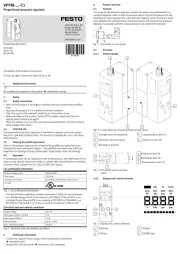
2 Augustus 2025
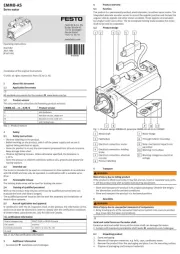
1 Augustus 2025
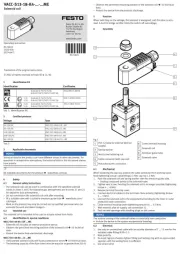
1 Augustus 2025
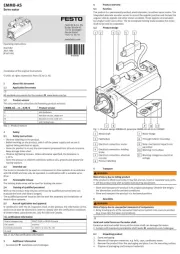
1 Augustus 2025
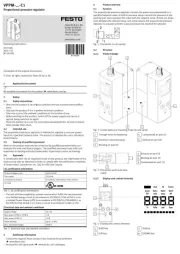
1 Augustus 2025
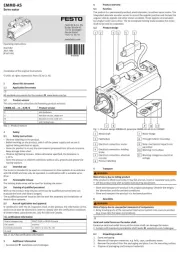
1 Augustus 2025
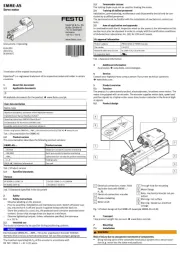
1 Augustus 2025
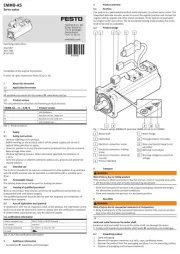
1 Augustus 2025
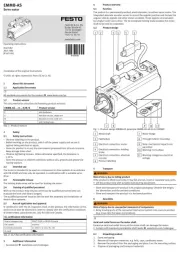
1 Augustus 2025
Handleiding Niet gecategoriseerd
- Neumärker
- Tripp Lite
- CRU
- Victor Technology
- RME
- IFootage
- Proficare
- SingularXYZ
- Oliveri
- Wet Sounds
- ESE
- Pride
- Tovsto
- Vogels
- PS Audio
Nieuwste handleidingen voor Niet gecategoriseerd
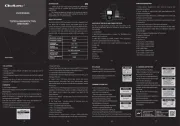
13 September 2025
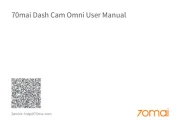
13 September 2025
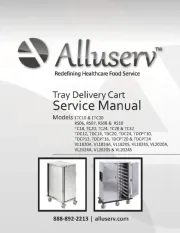
13 September 2025
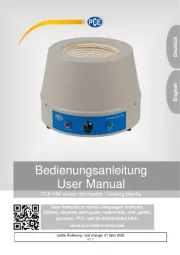
13 September 2025
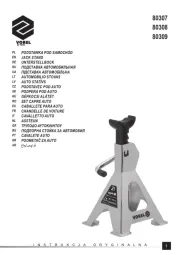
13 September 2025
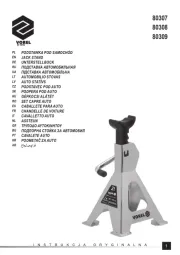
13 September 2025
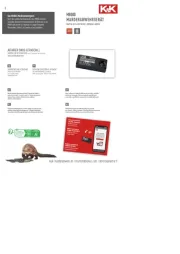
13 September 2025
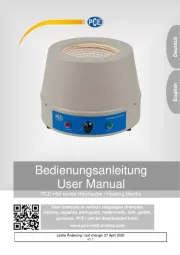
13 September 2025

13 September 2025
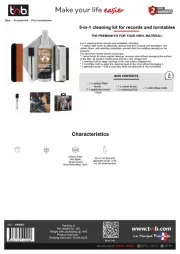
13 September 2025